Star Trek IV: The Voyage Home is a time travel movie in a very literal sense. The plot follows Captain James T. Kirk (William Shatner) and the crew of the Enterprise as they embark on a dangerous mission that takes them from the 23rd century back to 1986 in the hopes of saving a pair of humpback whales. However, beneath that plot summary, The Voyage Home is about a different sort of time travel. It’s a story about taking a set of icons of 1960s pop culture and throwing them into Ronald Reagan’s America.
Premiering in September 1966 and concluding just a few weeks shy of the moon landing in 1969, Star Trek was one of the defining shows of the 1960s. This is reflected in everything from its heightened technicolor aesthetic, which may have been tied to NBC being owned by a company that made color televisions, through to its thematic concerns. Star Trek was a show about a very turbulent moment in American life, grappling with everything from youth culture to Vietnam to the Cold War.
It’s hard to overstate just how firmly the show was anchored in its cultural moment. Spock (Leonard Nimoy) was “one of the most counterculture figures in mainstream media.” Gene Roddenberry would later establish that Starfleet Headquarters was not situated in Washington D.C. or New York, but in San Francisco, a city firmly tied to 1960s counterculture. The Federation President sits in Paris, another city with a similarly complicated relationship to the end of the 1960s.
Although it would eventually be supplemented with spinoffs like The Next Generation and Deep Space Nine, the original Star Trek arguably remained rooted in the 1960s. When the crew transitioned to the big screen with The Motion Picture in 1979, the resulting film pilfered mercilessly from Stanley Kubrick’s 1968 classic 2001: A Space Odyssey. The crew’s final big screen adventure, Star Trek VI: The Undiscovered Country, grappled with the end of the Cold War and the obsolescence of 1960s icons.
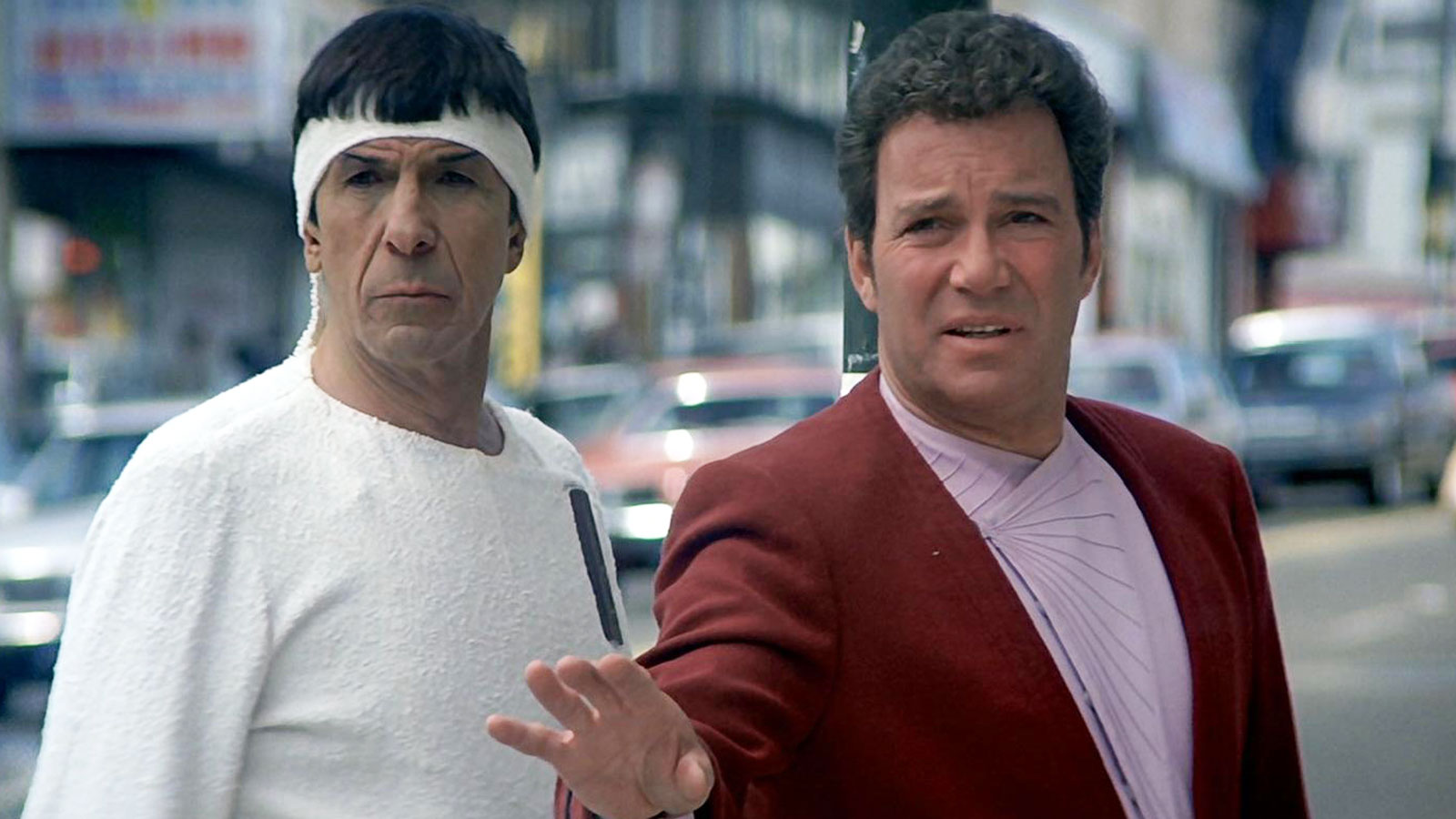
The Voyage Home marked the 20th anniversary of the Star Trek franchise. It was also a triumphant homecoming for the series. Star Trek had struggled on television and was canceled after only three seasons. Although The Motion Picture had been profitable, it was not well-reviewed. Paramount had given Star Trek II: The Wrath of Khan and Star Trek III: The Search for Spock significantly lower budgets, unsure of the series’s long-term viability.
The Voyage Home changed everything. Budgeted at $24 million, it was a much larger investment than either The Wrath of Khan ($12 million) or The Search for Spock ($16 million). It would become the franchise’s highest-grossing film at the domestic box office until J.J. Abrams’ reboot in 2009. It was also only the fourth film to earn an A+ CinemaScore and the first since 1982. It was the point at which Paramount began openly talking about reviving the franchise on television.
Although the fans would later come to fixate on The Wrath of Khan as a cornerstone of the franchise, particularly following the release of Star Trek: First Contact, the influence of The Voyage Home as a piece of populist and crowd-pleasing Star Trek is pronounced. The movie’s time travel premise was frequently reworked as two-part event episodes like “Time’s Arrow” on The Next Generation, “Past Tense” on Deep Space Nine, and “Future’s End” on Voyager. For a decade after the film’s release, this was archetypal Star Trek.
It’s easy to understand why the film resonated and endured in the way that it did. It’s more than just a charming fish-out-of-water comedy about time travelers landing in then-current-day America. It’s a film about Star Trek. In particular, it’s a film about what Star Trek means as a bastion of 1960s values when thrown into the radically different social context of Reagan’s America. The Voyage Home asked whether these icons still spoke to a world 20 years removed from their original context.
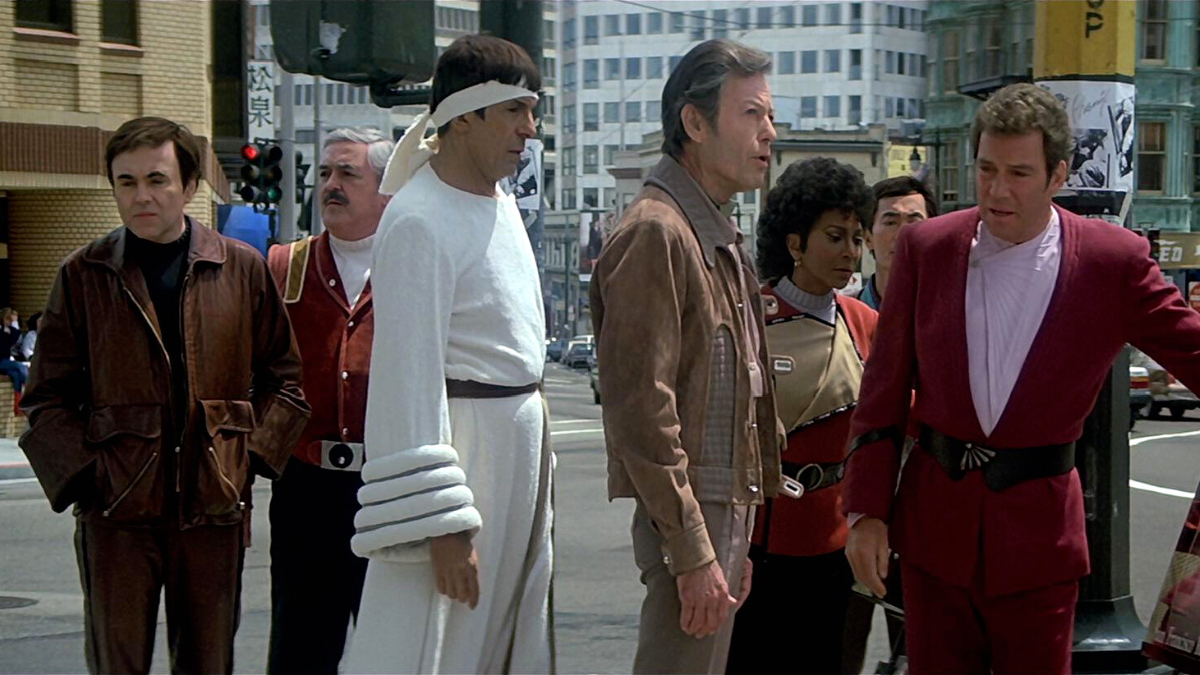
It is worth placing this in a larger social context. During the 1980s, America found itself grappling with a social transformation that had seen a generation that grew up embracing countercultural utopianism instead embracing ruthless individualist capitalism. This conflict was perhaps epitomized in a series of ongoing “Yuppie vs. Yippie” debates between 1960s radicals Abbie Hoffman and Jerry Rubin that raged through the middle of the 1980s about how best to adapt to a shifting culture.
It also played out in the pop culture of the era. In 1978, a year before The Motion Picture was released, Leonard Nimoy appeared in Philip Kaufman’s remake of Invasion of the Body Snatchers. The earlier 1956 film had been a paranoid fantasy about communist agents invading American life, but the remake was about a more insidious threat: “the way hippies transformed into yuppies, basically overnight.” Like The Voyage Home, Kaufman’s remake was even set in San Francisco, to underscore the point.
While Kirk and his crew are traveling backwards in time in The Voyage Home, the movie is really about trying to push Star Trek 20 years forward. Picking up after the events of The Search for Spock, the early scenes reestablish Starfleet Headquarters in the San Francisco Bay. The movie then joins Kirk in his “exile” on Vulcan. Having mutinied against Starfleet, Kirk and his crew face a journey back to Earth where they will be judged for their actions.
It’s a framing device that places Kirk and his crew as outsiders and outcasts even before they arrive in 1986. These are characters out of time, even naming their stolen Klingon Bird of Prey the “HMS Bounty” in an allusion to the famous maritime story. However, before Kirk and his crew can return to Earth, the planet finds itself under siege by a mysterious alien entity that is attempting to communicate with humpback whales, a species that has become extinct by this future setting.
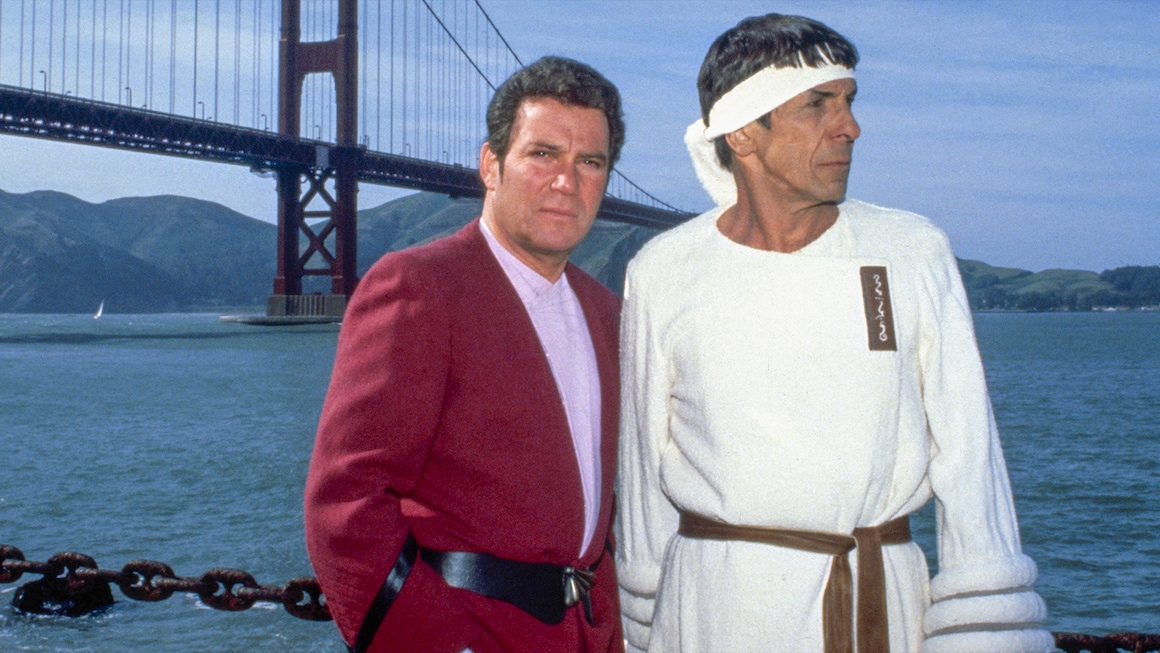
The Voyage Home is an explicitly environmentalist fable. Even more than The Undiscovered Country, it is a movie that has something very pointed to say about the world in which it exists. There’s an ongoing debate in Star Trek fandom about whether the franchise truly works in film, and one of the frequent complaints is that the films lack the distinctive social commentary that makes the television show so compelling. The Voyage Home is a counterargument. It’s a movie about saving the whales.
Obviously, “save the whales” was a movement that was still in the popular consciousness when the movie was released, and Leonard Nimoy takes credit for building the story around it. However, the movie’s investment in environmentalism feels like an attempt to tie the franchise to a specific strand of 1960s utopianism. After all, environmentalism is firmly rooted in the counterculture of the 1960s and is often overlooked in discussions of the period and isolated from the larger social context.
However, The Voyage Home is also engaged with other culture clashes that reflect the transition from 1960s idealism to 1980s cynicism. The film is particularly interested in the idea of materialism, one of the central ideological tenets of 1980s culture. The first locals that the crew encounters are two garbagemen (Phil Rubenstein and John Miranda) discussing a domestic argument over a $60 toaster oven, setting up a key preoccupation for the film.
Taking his crew downtown, Kirk’s first observation is that “they’re still using money. We’ve got to find some.” Before the crew can even begin their mission, Kirk must pawn a set of glasses gifted to him by Leonard McCoy (DeForest Kelley) to give the crew walking-around money. Realizing that they need to get to the Cetacean Institute, Kirk and Spock board a bus, only to be immediately kicked off. Spock ponders, “What does it mean, ‘exact change’?”
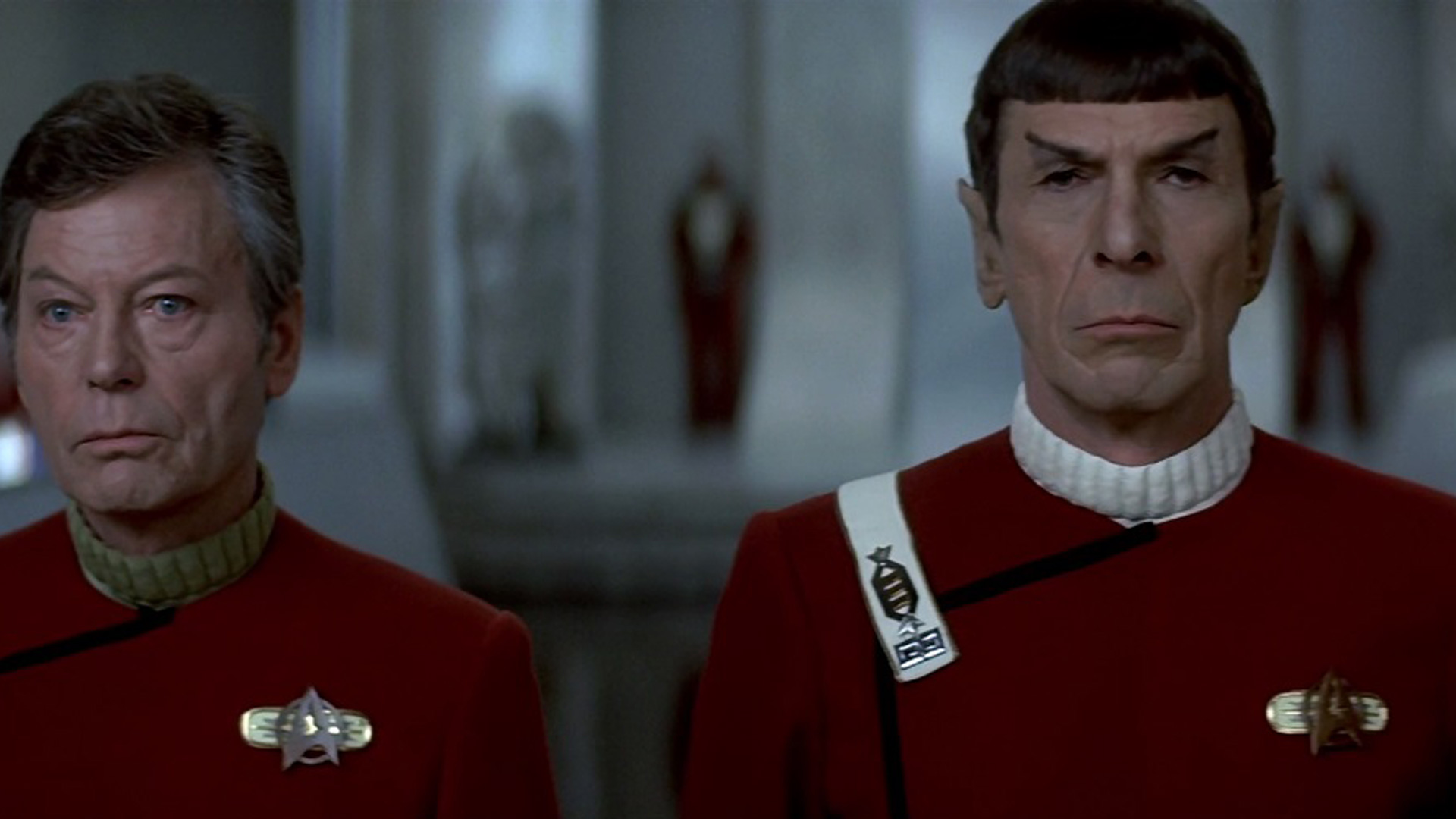
The Voyage Home is the first time that the franchise explicitly confirms that Starfleet does not have a monetary economy. Just in the previous movie, McCoy had attended a shady bar and tried to pay a smuggler (Allan Miller) to take him to the Genesis Planet. In this way, the emphasis on money as something foreign and alien to Kirk and his crew is both an explicit embrace of 1960s counterculture and a rejection of Reagan-era values.
In some ways, money is the real villain of The Voyage Home. Gillian Taylor (Catherine Hicks) reveals that the Cetacean Institute is releasing its two captive whales not for their own wellbeing, but because they cost too much. “Well, for one thing, we simply don’t have enough money to keep feeding them two tons of shrimp a day,” she explains to Kirk. In the wild, the whales will be hunted and harvested for their fat, a way of extracting maximum economic value from them.
Of course, The Voyage Home isn’t just engaged with materialism. There’s a healthy skepticism of militarism as well. Chekov (Walter Koenig) is sent to infiltrate the aircraft carrier Enterprise, where he is captured and accused of espionage. It’s the same aircraft carrier that appeared in Top Gun, one of Paramount’s other big releases of the year. The Voyage Home is a somewhat less flattering portrayal of the military, with Chekov nearly fatally injured during his escape attempt.
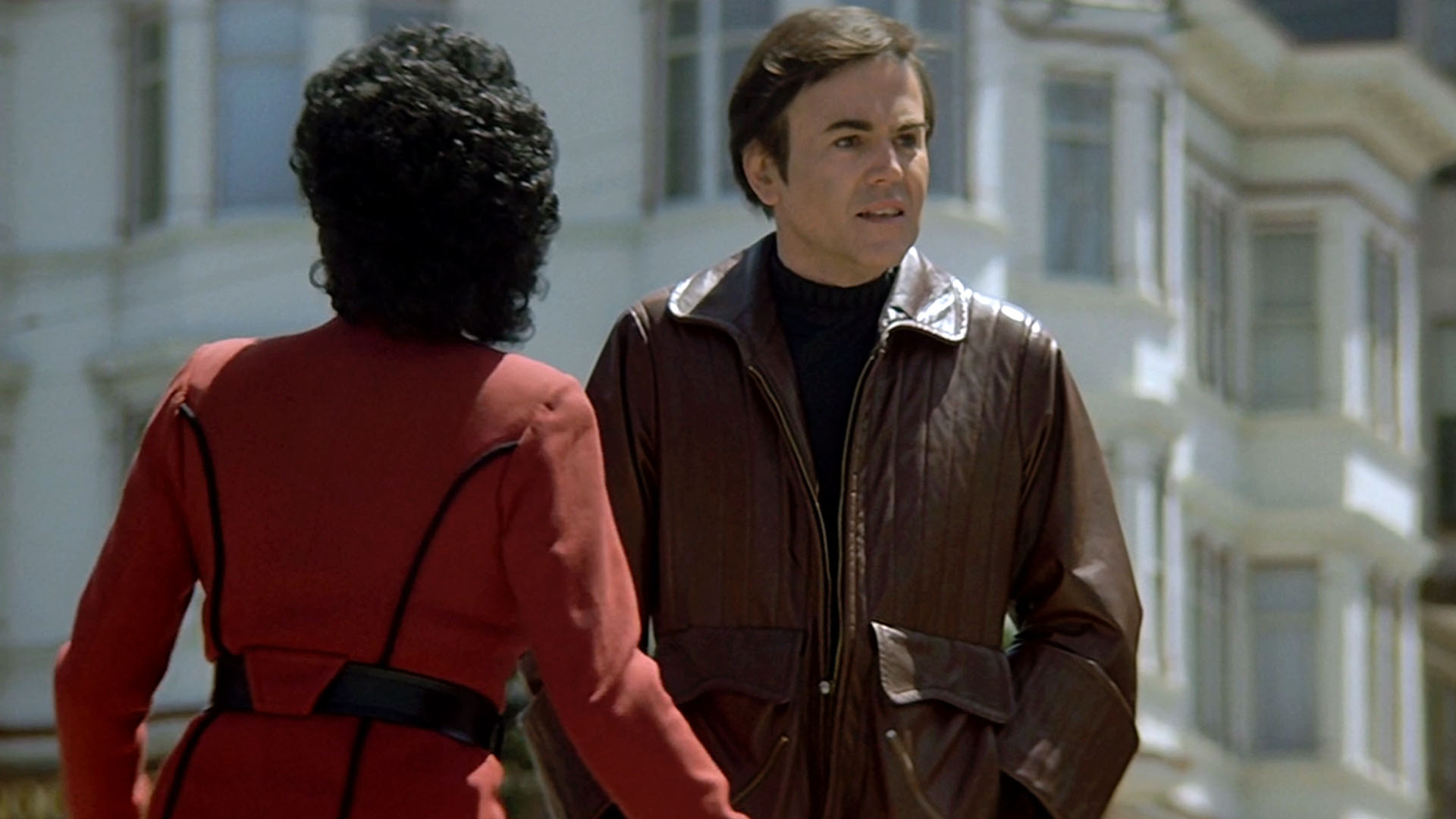
Gillian is initially skeptical of Kirk because she fears that he works for the military and is “trying to teach whales to retrieve torpedoes, or some dipshit stuff like that.” Kirk rejects this, presenting as something of an anti-establishment figure. He even anchors Spock in the counterculture. “Back in the sixties he was part of the Free Speech movement at Berkeley,” Kirk bluffs. “I think he had a little too much LDS [sic].” Kirk knows what he is, even in this “extremely primitive and paranoid culture.”
In their own way, each of the first four Star Trek movies is about these icons of the 1960s navigating a changing world. It’s there in Kirk trying to figure out his relationship to Decker (Stephen Collins) in The Motion Picture or grappling with old age and regret in The Wrath of Khan. It’s present in Kirk’s mutiny against Starfleet in The Search for Spock and his desperate attempt to resurrect his best friend against all odds. In The Voyage Home, it’s still there in the revived Spock, trying to find a way back to himself.
The Voyage Home completes the so-called “Genesis Trilogy” that began with The Wrath of Khan. It ends with Kirk back where he belongs, on the bridge of a newly built Enterprise. He has faced Khan Noonien Singh (Ricardo Montalban) and Kruge (Christopher Lloyd), but The Voyage Home suggests that Kirk’s greatest victory is preserving 1960s values in the face of 1980s cynicism.

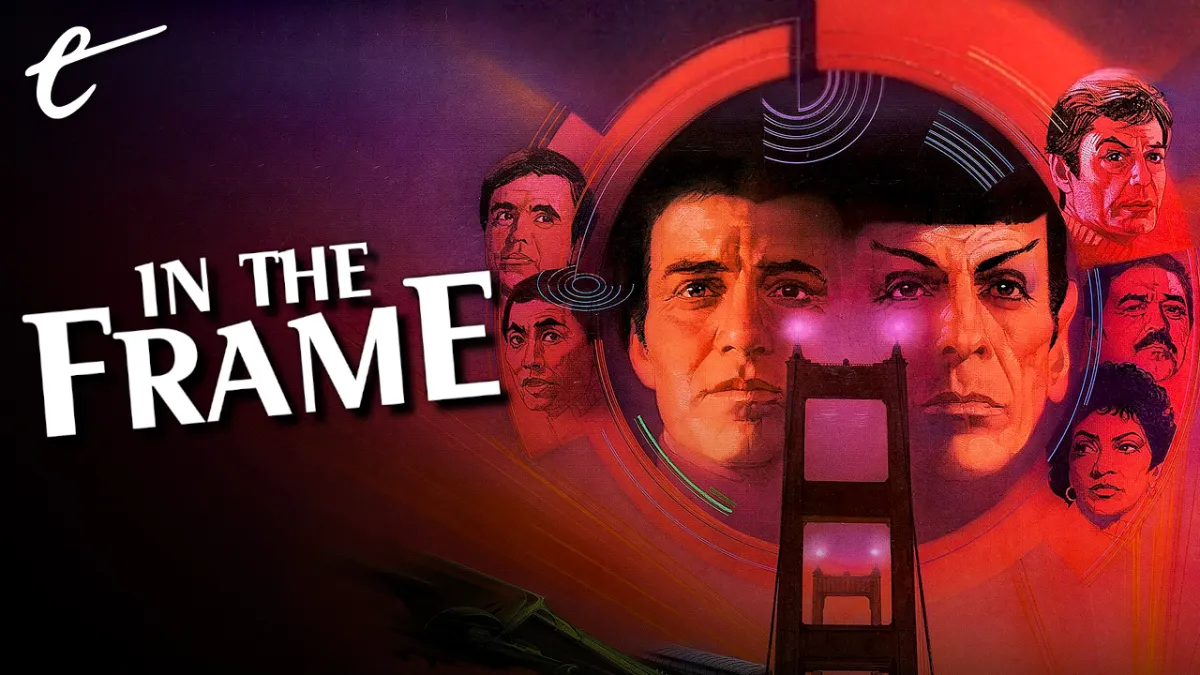




Published: Apr 17, 2023 11:00 am